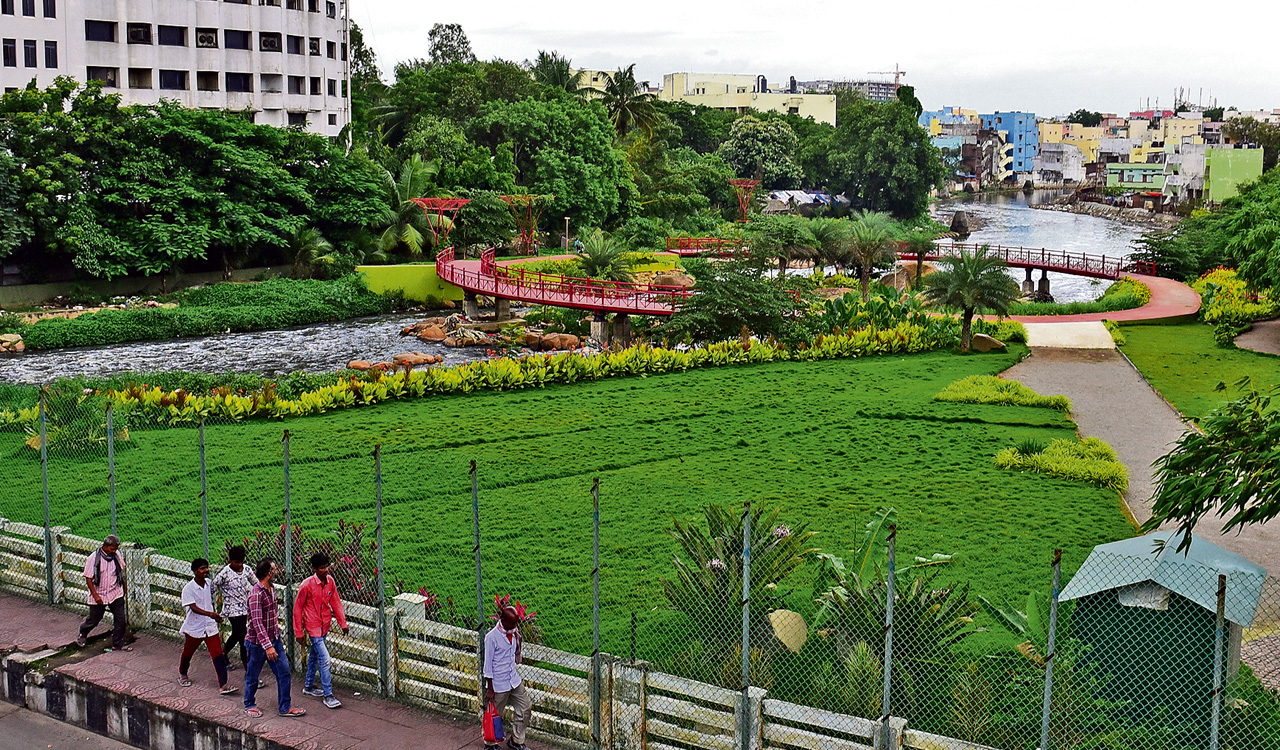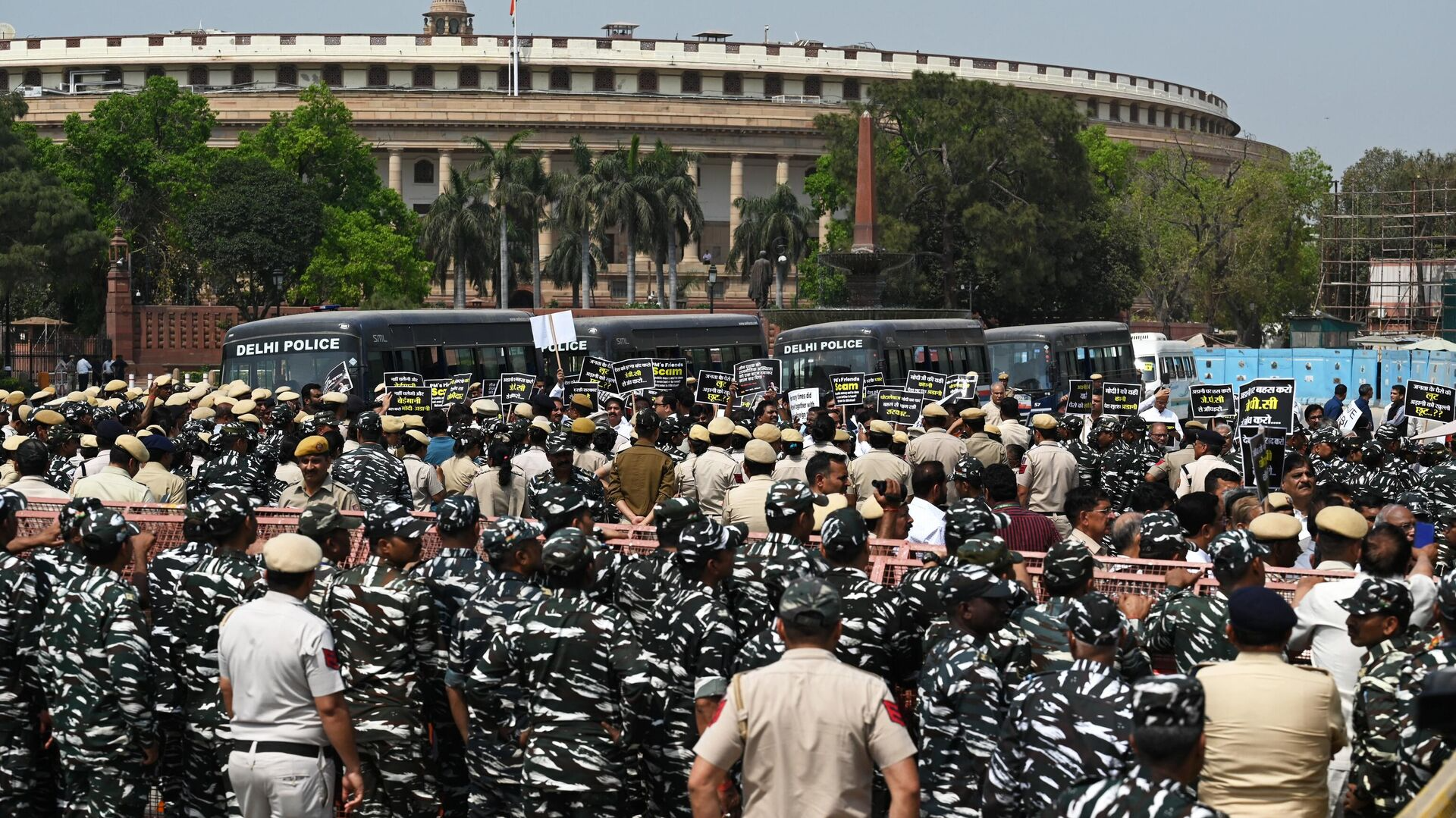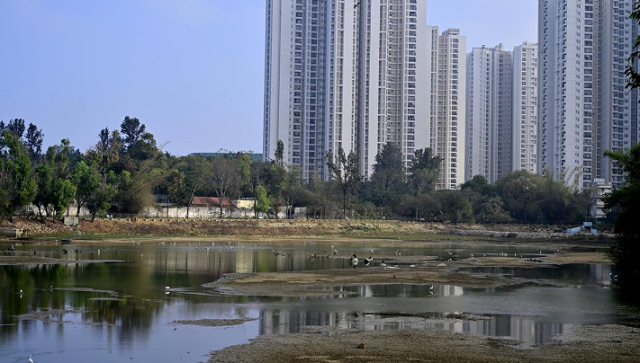Hyderabad Launches Green Drive
Posted On July 11, 2025

As environmental concerns continue to escalate in urban India, the Telangana government has launched an ambitious greening campaign under the banner of “Haritha Hyderabad 2025”, a large-scale ecological mission aimed at significantly improving the city's green cover and air quality. Launched on June 25 by Chief Minister Revanth Reddy, the campaign aims to plant over 30 million saplings across Greater Hyderabad within the next 180 days. Target areas include arterial roads, industrial belts, urban lakes, educational campuses, and even residential colonies, with the objective of restoring ecological balance and fighting the urban heat island effect.
The campaign involves multiple government bodies like the GHMC (Greater Hyderabad Municipal Corporation), Forest Department, and HMDA, as well as local NGOs, school students, and private corporations. Public participation has been made a cornerstone of the initiative- citizens can adopt saplings, monitor their growth via a mobile app, and even receive digital certificates recognizing their contributions. Species selected include both native trees such as neem, peepal, jamun, and banyan, as well as fast-growing varieties like rain tree and teak to optimize canopy formation.
Infrastructure is being created to sustain the initiative. The city will see the establishment of micro-nurseries, urban forestry pockets, and the revival of 40 urban lakes as natural catchment areas. Special care is being taken to avoid monocultures, with biodiversity experts curating species suited to local microclimates. Corporates under the CSR framework have been encouraged to “adopt” road stretches and campuses for afforestation. Schools and colleges are incorporating plantation activities as part of environmental education programs, ensuring that the message of green citizenship is passed down to younger generations.
Critics argue that while the plantation drive is laudable, previous efforts have seen high sapling mortality due to lack of post-plantation care. In response, the state has allocated ₹260 crore for fencing, watering systems, and survival audits over three years. Over 15,000 green volunteers have been trained to monitor saplings, and GPS-tagged plants will be tracked via satellite to ensure transparency. Urban development laws are also being amended to ensure that new constructions must include a green buffer zone proportional to plot size.
Environmental experts and urban planners are cautiously optimistic. If implemented with sincerity, “Haritha Hyderabad 2025” could increase the city’s green cover by 20% over three years, reduce dust pollution, enhance groundwater retention, and offer shade and biodiversity to densely packed neighborhoods. More importantly, it signals a shift in governance - one where ecology is being mainstreamed into infrastructure, urban planning, and civic responsibility. Hyderabad could set a national precedent if this model proves replicable in other Indian metros struggling with rising temperatures and receding greenery.
The campaign involves multiple government bodies like the GHMC (Greater Hyderabad Municipal Corporation), Forest Department, and HMDA, as well as local NGOs, school students, and private corporations. Public participation has been made a cornerstone of the initiative- citizens can adopt saplings, monitor their growth via a mobile app, and even receive digital certificates recognizing their contributions. Species selected include both native trees such as neem, peepal, jamun, and banyan, as well as fast-growing varieties like rain tree and teak to optimize canopy formation.
Infrastructure is being created to sustain the initiative. The city will see the establishment of micro-nurseries, urban forestry pockets, and the revival of 40 urban lakes as natural catchment areas. Special care is being taken to avoid monocultures, with biodiversity experts curating species suited to local microclimates. Corporates under the CSR framework have been encouraged to “adopt” road stretches and campuses for afforestation. Schools and colleges are incorporating plantation activities as part of environmental education programs, ensuring that the message of green citizenship is passed down to younger generations.
Critics argue that while the plantation drive is laudable, previous efforts have seen high sapling mortality due to lack of post-plantation care. In response, the state has allocated ₹260 crore for fencing, watering systems, and survival audits over three years. Over 15,000 green volunteers have been trained to monitor saplings, and GPS-tagged plants will be tracked via satellite to ensure transparency. Urban development laws are also being amended to ensure that new constructions must include a green buffer zone proportional to plot size.
Environmental experts and urban planners are cautiously optimistic. If implemented with sincerity, “Haritha Hyderabad 2025” could increase the city’s green cover by 20% over three years, reduce dust pollution, enhance groundwater retention, and offer shade and biodiversity to densely packed neighborhoods. More importantly, it signals a shift in governance - one where ecology is being mainstreamed into infrastructure, urban planning, and civic responsibility. Hyderabad could set a national precedent if this model proves replicable in other Indian metros struggling with rising temperatures and receding greenery.












